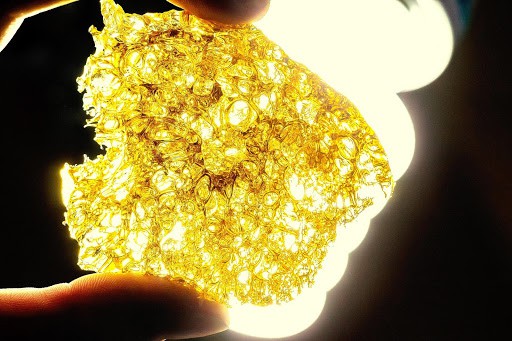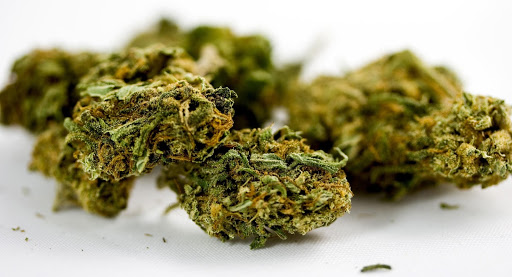In recent years, the cannabis market has broadened far beyond a simple competition for the choicest flower, evolving to cater to a growing spectrum of tastes and preferences. In particular, cannabis concentrates have been one of the most popular trends in recreational cannabis for the past few years. In 2018, cannabis concentrates represented approximately one-third of the cannabis market, more than double the 2015 industry share, per recent data. Unfortunately, some of the more popular methods of producing cannabis concentrates, such as butane cannabis extraction, require highly flammable solvents. Even when these methods are applied correctly, solvents such as butane may remain in the concentrates, leading to a slew of health concerns. As a result, more consumers are now seeking cleaner and safer extraction methods, such a supercritical CO2 extraction. In this post, we will explain butane extraction as well as alternative extraction methods to consider. So how does butane extract THC, and what are the drawbacks of butane extraction? Let’s take a look…
What Is BHO?
Butane hash oil — or BHO, as it is more commonly known — is a highly concentrated form of cannabis oil. Once collected, the oil is often smoked directly or vaped. As the name suggests, butane hash oil is created using the butane extraction method. There are numerous different types of BHO on the market including budder, dabs, wax, and shatter. Learning the idiosyncrasies of these products may seem like a dive into a semantic quagmire for those new to concentrates, but the general principle to understand is that there are many ways to slightly tweak the extraction process to create thinner, goopier, or even clearer extracts. For example, a product known as “crumble” is made using a process with a longer purge time and lower temperature. Increasing the temperature or whipping the extract will also result in different products with different consistencies. Consumers find these extracts appealing due to their relatively high THC content. At the high end, these products may have THC concentrations of nearly 90 percent — four times the typical percentage found in an average bud. Intuitively, this exceptionally high THC content will lead to a faster and stronger high when compared with smoking traditional leaf cannabis. Popular shatters and waxes can be created using either butane or supercritical extraction, and a given producer may prefer one method to another for various reasons, including operational limitations. Regardless, there are certainly several health hazards and other safety concerns to understand before choosing one method over another.
How to Make BHO: Butane Extraction
The most dangerous type of butane extraction utilizes a metal or glass tube to act as the extraction chamber. The step of pushing butane through the cannabis is colloquially known as “blasting.” During the “blasting” portion of the process, the butane works through the organic material, slowly stripping away the cannabinoids from the cannabis. This resulting concoction is a toxic mixture of excess butane and the desired psychotropic oils from the cannabis plant. To be safely consumed, the butane must be completely purged from the mixture. As the butane boils away, a goopy brownish substance rich in THC remains. This material is then scraped away and collected. This open “blasting” process creates several serious safety risks for users and consumers.
Butane vs CO2 Extraction: Butane Dangers
If BHO is not properly treated and purged, butane will remain in the oil and may lead to a number of health problems. A recent study in the New England Journal of Medicine (NEJM) noted a link between inhaling inadequately purged butane and a severe lung condition resembling chemical pneumonitis. Interestingly enough, aside from the dangers associated with improperly purged butane extracts, there are also operational drawbacks to consider. In recent years, in-home butane extraction machines have been responsible for hundreds of explosions and fires, as well as tragic deaths. As demand has increased nationwide, so too has the number of explosions related to solvent-based hash oil operations, especially due to shoddy DIY butane extraction kits. In an indoor environment, butane can amass quickly. Once the concentration is high enough, the smallest spark — say, from a home appliance motor or an electronic device — can set off a deadly explosion. As a response to the increased number of fires caused by butane extraction, several states are enacting laws to reduce the practice or even bar it all together. At the moment, nearly a dozen states require operators who wish to use a butane extraction machine to utilize a closed-loop system. In New York, operators wishing to use an extraction process other than CO2 or alcohol must first apply for and receive state approval, and some other states have similar approval requirements specifically for butane extraction.
Supercritical CO2 Extraction: A Safer, Cleaner Alternative
Fortunately, there is an alternative available for those seeking a cleaner, safer extraction method without all of the red tape that comes with a butane extraction machine. Supercritical CO2 extraction has been used throughout the food and beverage industries for decades due to its efficiency, safety, and ease of use. In recent years, CO2 extraction has become one of the more preferred extraction methods in the cannabis concentrates industry as well. That’s because supercritical extraction comes without many of the health hazards associated with light hydrocarbonsolvent-based methods.
The CO2 cannabinoid extraction process starts with a simple setup. First, the plant material is placed in an extraction column. Next, a compressor and heating element increases the pressure and heat to allow the CO2 to reach its supercritical state. Supercritical CO2 maintains properties of both a liquid and a gas, passing through the cannabis like a gas while also dissolving materials like a liquid. A sudden reduction in pressure between the material column and the collection jar causes the CBD to separate from the CO2, allowing the raw CBD oil to be collected. Unlike the butane extraction method, this material requires no additional processing to eliminate residual solvents.
Historically, one of the biggest drawbacks of supercritical CO2 extraction was the initial cost of setup. With OCO Lab’s extraction kits, this is no longer the case. Our lineup of efficient and affordable extractors allows operators precise control, run after run, without the health risks and hazards associated with butane extraction. Supercritical CO2 extraction remains the optimal method of yielding the purest cannabis extracts. For entrepreneurs in the market for an affordable, efficient tabletop extraction machine engineered to give operators maximum control and acute precision with every extraction, look no further than OCO Labs Modular Tabletop Extractors. Our Modular Tabletop Extractors are designed to be easy-to-use and safe for any operation. With our cannabis extraction products, you can cater confidently to the increasingly nuanced and sophisticated cannabis market with an endless variety of high-quality concentrates.
We update our blog regularly so stay tuned for the latest on supercritical co2 extraction, CO2 extraction vs butane comparisons and much more!







